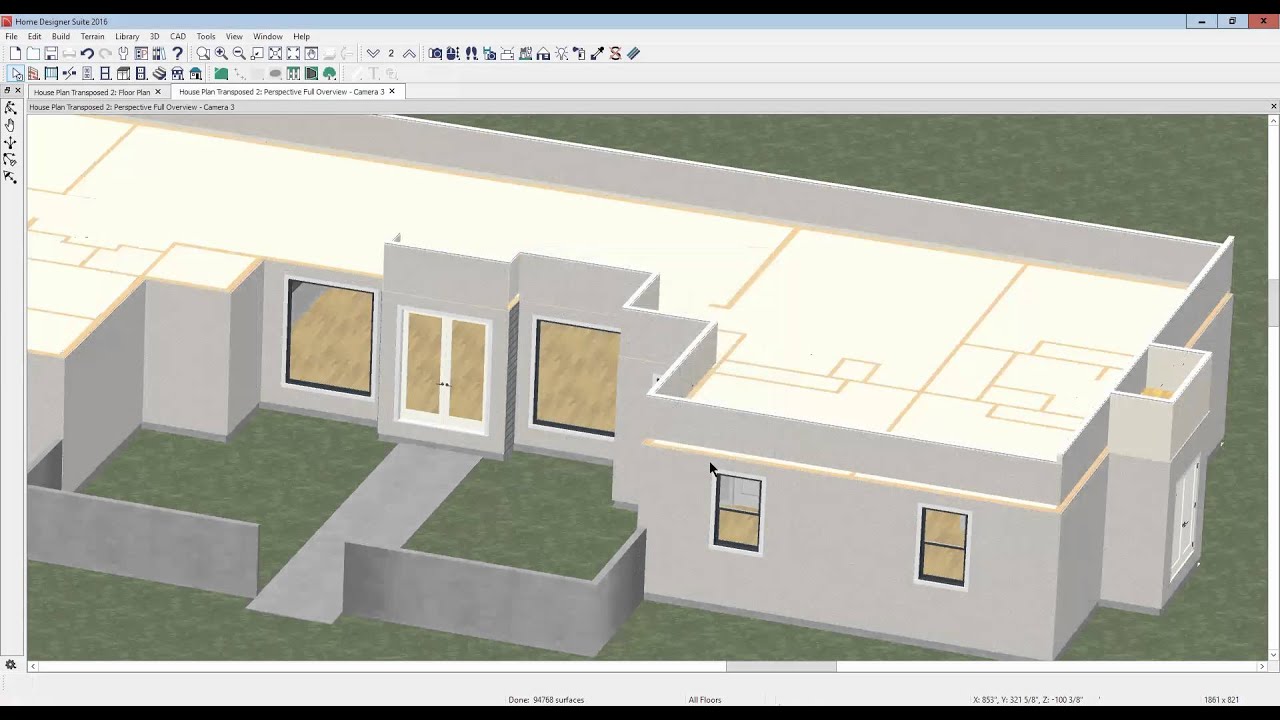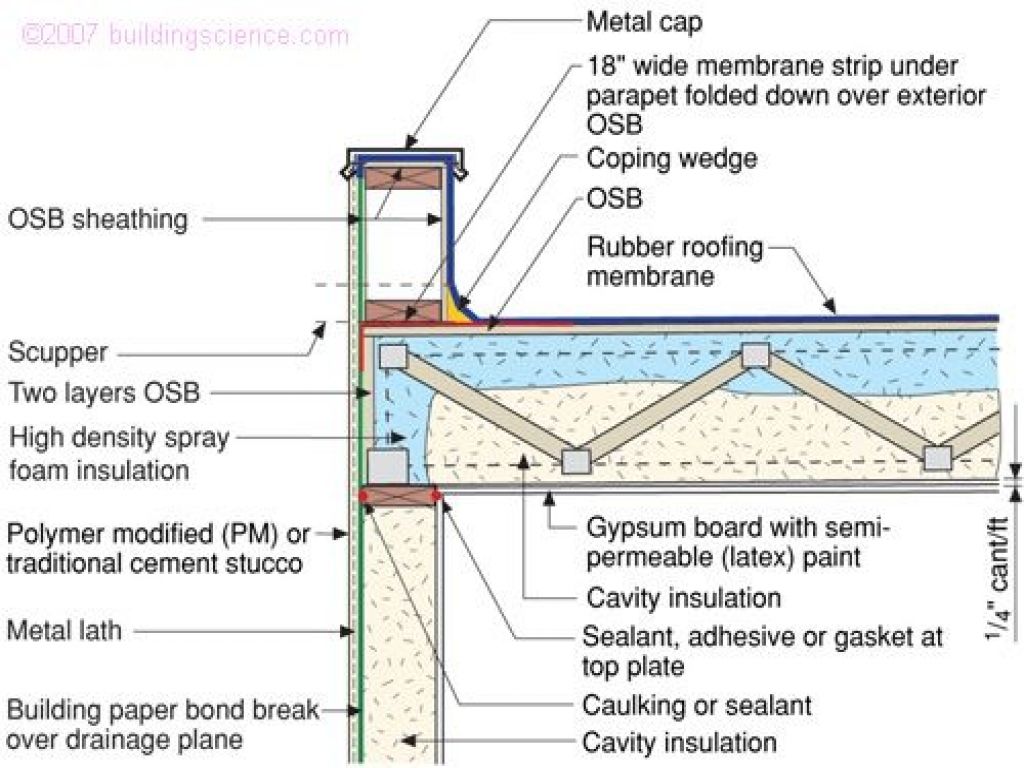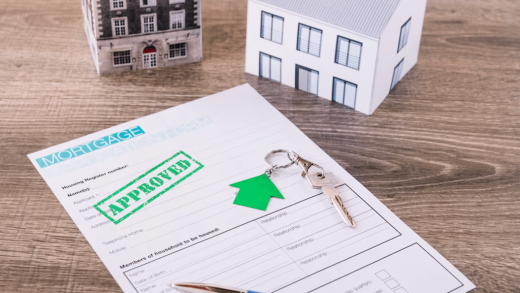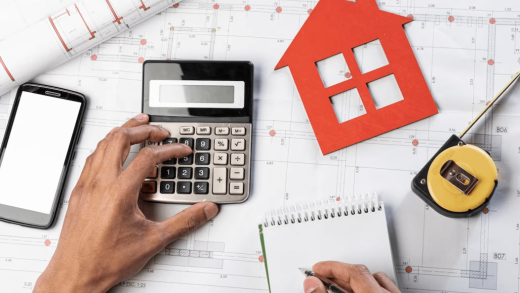
How to Measure Roofs with Parapet Walls
Roof measurements are an essential part of any construction or renovation project, and when it comes to roofs with parapet walls, it’s important to know how to measure them accurately.
Parapet walls are vertical barriers that extend above the roofline, providing added protection and aesthetic appeal to a building. While parapet walls offer many benefits, they can complicate the process of measuring the roof.
So, how do you measure a roof with parapet walls? In this step-by-step guide, we will walk you through the process, ensuring you have all the information needed to measure your roof accurately.
Step 1: Start by measuring the base of the roof just like you would with any other type of roof. This means measuring the length and width of the roof from one end to the other, using a measuring tape.
Step 2: Next, measure the height of the parapet wall. This can be done by placing a ladder against the wall and using a measuring tape or a measuring stick to determine the height from the base of the wall to the top.
Step 3: Once you have the measurements for the base and the height of the parapet wall, you can calculate the area of the wall. Multiply the length of the wall by the height to get the total square footage. This measurement will help you determine the amount of material needed for the wall.
Step 4: Finally, add the area of the roof base to the area of the parapet wall to get the total area of the roof. This will give you an accurate measurement that takes into account both the roof and the parapet walls.
Remember, accurate measurements are crucial for any construction project, and measuring roofs with parapet walls requires careful attention to detail. By following this step-by-step guide, you can ensure that your measurements are precise and that your roofing project goes smoothly.
Step 1: Gather the Necessary Tools
Before you can begin measuring roofs with parapet walls, you will need to gather a few important tools. These tools will help you accurately measure the dimensions of the roof and the walls.
Here is a list of the necessary tools:
- Measuring tape: A measuring tape is essential for measuring the length, width, and height of the roof and the walls. Make sure the tape measure is long enough to reach all areas of the roof.
- Ladder: A sturdy ladder is necessary to access the roof and get close enough to accurately measure the walls.
- Notebook and pencil: It’s important to have a notebook and pencil handy to write down all of your measurements. This will help you keep track of the dimensions and avoid any confusion later on.
- Safety equipment: Safety should always be a top priority when working on roofs. Wear appropriate safety equipment, such as a hard hat, gloves, and non-slip shoes, to protect yourself during the measurement process.
Once you have gathered all of the necessary tools, you will be ready to move on to the next step in measuring roofs with parapet walls.
Step 2: Measure the Length of the Roof
To accurately measure the length of the roof, follow these steps:
- With a tape measure, start at one end of the roof and extend it along the edge until you reach the opposite end. Ensure that the tape measure is parallel to the ground.
- Note down the measurement on a piece of paper. It is important to be precise and avoid rounding off the numbers.
- If the roof has multiple sections or angles, measure each section individually and record its length separately.
- If the roof has any irregularities or offsets due to walls or other structures, take note of these measurements as well.
- Repeat this process for each side of the roof in order to get accurate measurements for all the sides.
It is recommended to measure the roof from multiple angles to ensure accuracy. If the roof has parapet walls, be sure to measure from the top of the wall to the opposite end of the roof as well.
Once you have measured all the sides of the roof, you can proceed to calculate the total area of the roof by adding up the measurements of all the individual sections.
Step 3: Determine the Width of the Roof
In order to accurately measure the width of the roof with parapet walls, you will need to take several measurements and make some calculations. Here is a step-by-step guide to help you determine the width:
- Start by measuring the distance from one side of the parapet wall to the other.
- Make sure to measure from the outside edge of one wall to the outside edge of the other wall.
- Write down this measurement as the total width of the roof.
- Next, you will need to subtract the width of the parapet walls from the total width.
- Measure the width of each parapet wall and record these measurements.
- Subtract the sum of the parapet wall widths from the total width of the roof.
- The result will be the width of the roof without the parapet walls.
For example, if the total width of the roof is 30 feet and each parapet wall is 3 feet wide, you would subtract 6 feet (2 walls x 3 feet) from the total width. This would give you a width of 24 feet for the roof without the parapet walls.
By accurately determining the width of the roof, you will be able to calculate the square footage more precisely, which is essential for estimating materials and costs when working with roofs that have parapet walls.
Step 4: Calculate the Pitch of the Roof
Calculating the pitch of a roof is an important step in measuring roofs with parapet walls. The pitch, or slope, of a roof determines how steep it is and plays a crucial role in determining the amount of materials needed for the roofing project.
To calculate the pitch of the roof, you will need a ladder, a measuring tape, and a level. Here are the steps:
- Climb the ladder and position yourself near the edge of the roof.
- Using the measuring tape, measure the horizontal distance from the edge to a point 12 inches up the roof.
- Place the level on the roof, with one end at the 12-inch mark and the other end extending horizontally.
- Using the level, measure the vertical distance from the roof surface to the level.
- Divide the vertical distance by the horizontal distance and multiply by 12 to get the pitch in inches.
For example, if the vertical distance is 6 inches and the horizontal distance is 12 inches, the pitch would be 6/12 x 12 = 6 inches. This means that for every 12 inches of horizontal distance, the roof rises 6 inches vertically.
It’s important to note that roof pitch can also be expressed as a ratio or as the number of inches of vertical rise per foot of horizontal distance. For example, a pitch of 6 inches would be a 6/12 pitch or a 1/2 pitch.
Calculating the pitch of the roof is crucial for accurately estimating the amount of roofing materials needed and ensuring proper installation. Make sure to take accurate measurements and consult with a professional if you have any doubts or concerns.
Step 5: Measure the Height of the Parapet Walls
The next step in measuring a roof with parapet walls is to determine the height of the walls. This measurement is important because it affects the total square footage of the roof.
To measure the height of the parapet walls, follow these steps:
- Start by standing at ground level and visually identify where the parapet walls begin and end.
- Take a measuring tape and extend it vertically from the base of the wall to the top edge. Make sure the tape measure is plumb and straight.
- Read the measurement on the tape measure where it intersects with the top edge of the wall. This is the height of the parapet wall.
Repeat this process for each parapet wall on the roof. It may be helpful to have a ladder or be on an elevated position for walls that are difficult to reach.
Note: The height of the parapet walls may vary, so it’s important to measure each wall individually. Also, keep in mind that parapet walls can have different heights on different sides of the roof.
Once you have measured the height of all the parapet walls, record the measurements and use them to calculate the total square footage of the roof. This information will be useful for estimating materials and costs for roofing projects.
Step 6: Calculate the Area of the Roof
Now that you have measured the dimensions of the roof and taken into account the parapet walls, it’s time to calculate the area of the roof. This is an important step in determining the amount of materials you will need for any roofing project.
To calculate the area of the roof, you will need to break it down into different sections. Start by calculating the area of each individual section and then add them together to get the total area of the roof.
Calculating the area of each section:
- Main roof: Measure the length and width of the main roof section, excluding the area covered by the parapet walls. Multiply the length by the width to get the area of the main roof.
- Parapet walls: Measure the height and width of each parapet wall. Multiply the height by the width to get the area of each parapet wall. Repeat this step for each parapet wall and add up the areas to get the total area covered by the parapet walls.
Add up the areas:
Once you have calculated the area of each individual section, add them together to get the total area of the roof. This will give you an accurate measurement of the roof’s size and allow you to estimate the materials needed for any repairs or installations.
It’s important to double-check your calculations to ensure accuracy. Any mistakes in measurement can lead to incorrect estimations and possibly delays or additional costs down the line.
Additional considerations:
Keep in mind that this calculation only provides the area of the roof surface. It does not take into account factors such as slope, pitch, or any additional structures on the roof that may affect materials requirements. It’s always a good idea to consult with a professional or refer to manufacturer specifications for more precise calculations.
By following these steps and accurately measuring the roof area, you will be better prepared to plan and execute any roofing project.
Step 7: Account for Guttering and Drainage
When measuring roofs with parapet walls, it’s important to account for guttering and drainage systems. These features can affect the overall dimensions and measurements of the roof, so it’s crucial to take them into consideration.
Guttering:
- Start by identifying the locations of the gutters on the parapet walls.
- Measure the width of the guttering system. This measurement should include both the trough and the downspout.
- Note down the measurements of each guttering system on the roof.
- Be sure to measure any corners or angles of the guttering, as these can affect the overall length and shape of the system.
Drainage:
- Next, you’ll need to take into account any drainage systems on the roof.
- Measure the dimensions of the drainage pipes, including their width and height.
- Note the locations where the drainage pipes connect to the gutters or other drainage systems.
- If there are any drain covers or grates, measure their dimensions as well.
Additional considerations:
- Remember to include the measurements of the guttering and drainage systems when calculating the total area of the roof.
- If the guttering or drainage systems have any specific requirements or restrictions, make sure to take those into account during the measurement process.
- Keep in mind that the guttering and drainage systems may require regular maintenance, so it’s important to plan for accessibility and ease of maintenance when measuring the roof.
By accounting for the guttering and drainage systems, you’ll have a more accurate and comprehensive measurement of your roof with parapet walls.
Step 8: Determine the Square Footage of the Roof
After measuring the walls and parapet, you can now calculate the square footage of the roof. This step is crucial in determining the materials needed for the roofing project and estimating the overall cost.
- Start by calculating the square footage of the main roof area. Measure the length and width of the roof, and multiply the two values together to get the total square footage.
- Next, calculate the square footage of any additional roof sections, such as dormers or extensions. Measure the length and width of each section separately, and multiply these values together to get the total square footage for each section.
- Add together the square footage of the main roof area and any additional roof sections to get the total square footage of the entire roof.
It’s important to note that when measuring the roof, you should always round up to the nearest foot to ensure you have enough materials. Additionally, if the roof has multiple levels or sections, repeat the measurement process for each level or section and calculate the square footage separately.
Once you have determined the square footage of the roof, you can consult with a roofing professional or use an online roofing materials calculator to estimate the amount of roofing materials needed, such as shingles, underlayment, and flashing.
| Main Roof | 50 | 30 | 1500 |
| Dormer 1 | 10 | 8 | 80 |
| Dormer 2 | 12 | 6 | 72 |
| Total | – | – | 1652 |
In the example above, the main roof has a square footage of 1500, while the two dormers have a total square footage of 152. Adding these values together, the total square footage of the entire roof is 1652 square feet.
By accurately measuring the square footage of the roof, you can ensure that you purchase the right amount of materials and complete the roofing project successfully.
Step 9: Consider the Type of Roofing Material
When measuring roofs with parapet walls, it’s important to consider the type of roofing material used. Different roofing materials have different installation requirements, which can affect the overall measurements and calculations.
1. Asphalt Shingles: If the roof is covered with asphalt shingles, you’ll need to measure the dimensions of each shingle to accurately calculate the total area. Keep in mind that some shingles may require additional measurements due to their shape or pattern.
2. Metal Roofing: Metal roofing materials typically come in large panels that you’ll need to measure individually. Take into account any overlapping or interlocking features when measuring the panels.
3. Tile Roofing: Tile roofs are made up of individual tiles, so you’ll need to measure the length, width, and height of each tile to get accurate measurements. Additionally, consider the spacing and overlapping of the tiles when calculating the area.
4. Slate Roofing: Similar to tile roofing, slate roofs consist of individual slates. Measure the length, width, and thickness of each slate to accurately determine the total area.
5. Wood Shakes: Wood shake roofs are composed of individual wooden shakes. Measure the length, width, and thickness of each shake to calculate the overall area. Additionally, consider any overlapping or interlocking features when measuring.
6. Other Roofing Materials: If the roof is covered with a different type of material, such as rubber or synthetic materials, be sure to measure according to the specific installation requirements. Consider any unique features or measurements needed for that particular material.
By considering the type of roofing material used on roofs with parapet walls, you can ensure accurate measurements and calculations for determining the total area of the roof.
Step 10: Estimate the Cost of Roofing Materials
Once you have measured the area of the roof that needs to be covered, you can begin to estimate the cost of the roofing materials. This is an important step in the process because it will give you a rough idea of how much the project will cost.
Here are the steps to estimate the cost of roofing materials:
- Calculate the total area of the roof: Add up the area of each section of the roof that needs to be covered. Make sure to take into account any parapet walls that may be present.
- Determine the type of roofing material: There are many different types of roofing materials available, such as asphalt shingles, metal roofing, or tile. Each type of material will have a different cost per square foot.
- Research the cost of the chosen roofing material: Look up the current cost per square foot of the roofing material you have chosen. This information can usually be found on the manufacturer’s website or by contacting local roofing suppliers.
- Multiply the total area of the roof by the cost per square foot: Multiply the total area of the roof by the cost per square foot of the chosen roofing material. This will give you an estimate of the total cost of the roofing materials.
Keep in mind that this is just an estimate and the actual cost may vary. Factors such as the complexity of the roof, the location of the project, and the availability of the chosen roofing material can all affect the final cost.
It is also recommended to add a buffer of around 10% to the estimated cost to account for any unexpected expenses that may arise during the project.
By following these steps, you can get a good idea of the cost of the roofing materials for your project and make an informed decision about how to proceed.
Step 11: Account for Labor and Installation Costs
When measuring roofs with parapet walls, it is important to not only calculate the materials needed but also account for labor and installation costs. This step is crucial in determining the overall budget for the project. Here are some factors to consider:
- Roofing Labor Costs: The cost of labor can vary depending on the complexity of the roof design, location, and the size of the project. It is important to get estimates from roofing contractors to determine an accurate labor cost for your specific project.
- Parapet Wall Repairs: If the parapet walls on the roof are in need of repairs or additional work, it is important to include these costs in the overall budget. This may include repairing cracks, repointing mortar joints, or replacing damaged bricks.
- Installation Equipment: Depending on the size and scope of the project, additional installation equipment may be necessary. This could include cranes or lifts to access the roof and materials safely.
- Waste Disposal: It is important to consider the cost of waste disposal when calculating labor and installation costs. This includes the removal of old roofing materials, debris, and waste generated during the project.
It is recommended to consult with roofing contractors or professionals to get accurate quotes and estimates for labor and installation costs. They can provide valuable insights and guidance to ensure that you have an accurate budget for your roofing project.
Step 12: Take Safety Precautions
When measuring roofs with parapet walls, it is important to prioritize safety to prevent accidents or injuries. Follow these safety precautions to ensure that you measure the roof safely:
- Wear appropriate safety gear: Always wear a helmet, safety glasses, and gloves to protect yourself from any potential hazards. If you’re working at heights, consider using a safety harness and fall protection equipment.
- Use a sturdy ladder: Ensure that you have a stable and secure ladder to access the roof. Make sure that the ladder is properly placed on a flat surface and use ladder stabilizers or ladder levelers if needed.
- Secure the area around the parapet walls: Clear the area around the parapet walls of any debris, tools, or equipment that may pose a tripping hazard. Warn others about your work and put up signage or barriers if necessary.
- Be cautious of electrical hazards: Before measuring the roof, be aware of any electrical lines or equipment that may be present. Avoid contact with overhead power lines and be cautious when handling metal measuring tools near electrical sources.
- Work with a partner: It is always recommended to have a partner when working on roofs with parapet walls. They can help stabilize the ladder, provide assistance with measuring, and offer an extra set of eyes to ensure safety.
Remember, safety should always be your top priority when working at heights. Take the necessary precautions, assess the risks, and proceed with caution when measuring roofs with parapet walls.
Step 13: Consult with a Professional, if Necessary
While measuring roofs with parapet walls can be a complex task, it is important to ensure accuracy and safety when working at heights. If you are unsure about any aspect of the measurement process or have encountered challenges along the way, it is advisable to consult with a professional.
A professional roofing contractor or surveyor will have the expertise and experience to accurately measure roofs with parapet walls. They can also provide valuable insights and guidance on any potential issues or complications that may arise during the measurement process.
Additionally, a professional can help ensure that all necessary safety precautions are taken when working on the roof. Their knowledge of industry best practices and safety regulations will help minimize the risk of accidents or injuries.
Consulting with a professional is especially important in cases where the roof measurement will be used for construction or renovation purposes. Accurate measurements are crucial for determining the materials and quantities needed, as well as estimating the cost of the project.
By seeking professional advice, you can avoid potential errors or miscalculations that may result in additional expenses or project delays. It is always better to rely on the expertise of professionals when it comes to complicated roof measurements.
Remember, accurately measuring roofs with parapet walls requires precision and attention to detail. If you are unsure or lack the necessary expertise, do not hesitate to reach out to a professional for assistance. They can help ensure that your measurements are accurate and reliable, saving you time, effort, and potentially costly mistakes in the long run.
Step 14: Keep a Record of Measurements and Estimates
Once you have completed all the necessary measurements and calculations for your roof with parapet walls, it is important to keep a record of this information. This will be useful for various purposes, such as reference for future projects or for sharing with clients or contractors.
Here are some tips on how to keep a record of your measurements and estimates:
- Organize your records: Create a system to organize your measurement records. You can use folders, spreadsheets, or other digital tools to keep everything organized and easily accessible.
- Label and categorize your records: Clearly label each set of measurements and estimates with relevant information, such as the project name, date, and location. Categorize them based on the type of roof or parapet wall, making it easier to find specific records when needed.
- Include detailed descriptions: In addition to the numerical measurements, provide detailed descriptions of the roof and parapet walls. This may include the materials used, any special features or considerations, and any other relevant information that may be useful in the future.
- Take photographs: Take photographs of the roof and parapet walls from different angles to accompany your measurements. These visual references can be invaluable for future reference or when discussing the project with others.
- Maintain a backup: Make sure to keep a backup of your records in case of loss or damage. Store digital copies in multiple locations, such as on your computer, external hard drive, or cloud storage platforms.
- Update your records: If the project progresses and changes are made, make sure to update your records accordingly. This will ensure that you have accurate and up-to-date information for future reference.
- Share your records: If necessary, share your records with clients, contractors, or other relevant parties. This will enable everyone involved in the project to have access to the same information, reducing the chances of misunderstandings or discrepancies.
Keeping a detailed record of your measurements and estimates for roofs with parapet walls will not only benefit you in the future but also contribute to your professionalism and efficiency as a roofing professional. By following these steps, you can ensure that you have accurate and reliable records that can be accessed whenever needed.
Step 15: Review and Double-Check Measurements
Before finalizing your measurements for roofs with parapet walls, it is crucial to review and double-check all the measurements taken thus far. This step helps to ensure accuracy and minimize any margin of error that may have occurred during the process.
First, take a moment to review the measurements you have recorded for each section of the roof. Check for any discrepancies or inconsistencies that may have occurred. If you notice any questionable measurements, re-measure the area to confirm accuracy.
Next, double-check your calculations. Make sure you have correctly added, subtracted, multiplied, or divided the measurements as needed. This will help to ensure that your final measurements are accurate and reliable.
Additionally, compare your measurements against any existing blueprints or architectural plans. This can serve as a valuable cross-reference to verify the accuracy of your measurements.
It is also a good idea to have another person review your measurements. A fresh set of eyes can catch any errors or mistakes that you may have overlooked.
Finally, consider using digital technology, such as aerial imagery or drone photography, to verify your measurements. These tools can provide a detailed and accurate visual representation of the roof and parapet walls, allowing you to confirm your measurements.
By carefully reviewing and double-checking your measurements, you can ensure that your calculations are accurate and reliable. This attention to detail will contribute to the overall success of your roofing project and help to prevent any costly errors.
Q&A:
What is a parapet wall?
A parapet wall is a low protective wall or barrier that extends above the roofline of a building.
Why do some roofs have parapet walls?
Parapet walls are typically installed for aesthetic or functional purposes. They can add architectural interest to a building and also serve as a barrier to prevent people from falling off the roof.
How do you measure a roof with parapet walls?
To measure a roof with parapet walls, start by measuring the length and width of the main roof area, excluding the parapet walls. Then, measure the height of the parapet walls. Finally, add the measurements together to determine the total square footage of the roof.
Are there any special considerations when measuring a roof with parapet walls?
Yes, when measuring a roof with parapet walls, it is important to only measure the area of the roof that is below the parapet walls. The parapet walls themselves should not be included in the measurements, as they are not part of the actual roof.
Can you provide a step-by-step guide for measuring a roof with parapet walls?
Sure! Here is a step-by-step guide for measuring a roof with parapet walls: 1. Start by measuring the length and width of the main roof area, excluding the parapet walls. 2. Measure the height of the parapet walls. 3. Multiply the length of the main roof area by the width to calculate the square footage of the main roof. 4. Multiply the length of the parapet walls by the height to calculate the square footage of the parapet walls. 5. Add the square footage of the main roof and the square footage of the parapet walls together to determine the total square footage of the roof.
What is a parapet wall?
A parapet wall is a low protective wall-like structure that is built on the edge of a roof, balcony, or terrace to provide support and protection.
Why is it important to measure roofs with parapet walls?
It is important to measure roofs with parapet walls in order to accurately calculate the area and dimensions of the roof. This information is crucial for various purposes, such as estimating the amount of materials needed for repairs or renovations, evaluating the structural integrity of the roof, and calculating the cost of roofing projects.




